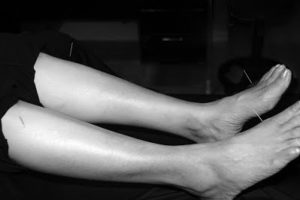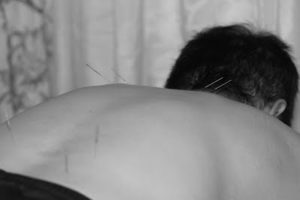Acupuncture is among the oldest healing practices in the world. As part of traditional Chinese medicine (TCM), it aims to improve health through the stimulation of specific points on the body with stainless steel needles. Dr. Ann Lee performs acupuncture in Lancaster, PA, at Health For Life Clinic.

Key Points
- China and other Asian countries have used acupuncture for thousands of years.
- Scientists are studying the efficacy of acupuncture for a wide range of conditions.
- Meanwhile, relatively few complications have been reported from the use of acupuncture.
Click here for a Visual Guide to Acupuncture on WedMD
About Acupuncture
The term “acupuncture” describes a family of procedures involving the stimulation of anatomical points on the body. Most scientific studies use the technique that penetrates the skin with thin, solid, metallic needles.
Practiced in China and other Asian countries for thousands of years, acupuncture is one of the key components of traditional Chinese medicine. Acupuncture helps to bring more blood flow and circulation to specific parts of the body, to allow more oxygen to get there for better function over time.
Use in the United States
The National Institutes of Health (NIH) in 1997, stated that acupuncture is being used for relief or prevention of pain and for various other health conditions. According to the 2007 National Health Interview Survey, which included a comprehensive survey of CAM use, an estimated 3.1 million U.S. adults and 150,000 children had used it in the previous year. Therefore, between the 2002 and 2007 NHIS, use among adults increased by approximately 1 million people.
Side Effects and Risks
The U.S. Food and Drug Administration (FDA) regulates acupuncture needles for use by licensed practitioners, requiring certain standards for manufacturing and labeling. For example, the FDA requires that needles be sterile, nontoxic, and labeled for single use by qualified practitioners only.

In conclusions, relatively few complications from the use of acupuncture have been reported to the FDA, in light of the millions of people treated each year and the number of needles used.
Status of Acupuncture Research
Techniques such as neuroimaging indicate acupuncture can quiet areas of the brain that cause us to perceive pain, while stimulating those areas that allow us to rest and regenerate damaged tissues. As a result, it increases blood flow in areas via Doppler ultrasound, and resolves inflammation via thermal imaging.
What To Expect and Benefits
During your first office visit, the practitioner may ask you about your health conditions and lifestyle. Thus, your practitioner will want to obtain a complete picture of your needs.
Acupuncture needles are metallic, solid, and hair-thin. The practitioner inserts needles on average 1/8″, and most report feeling no or minimal sensations. You may feel nothing, a vague numbness, heaviness, tingling, or dull ache with each needle inserted. Some people feel energized, while others feel relaxed. Overall, everyone responds differently, so your feedback of your experience is helpful for future sessions.
Multitude of disorders or conditions are addressed when acupuncture points are used in combination. Sessions may take place over a period of several weeks or more depending on your health goals. The practitioner may use similar points from session to session, and oftentimes points vary from session to session as progress changes.
Each individual responds differently- some feel more tired afterwards, some feel more energized afterwards. Likewise, some notice effects immediately, some notice effects over time. This is a great article on some of the possible effects from someone who had acupuncture for 3 months. Click here to read the full article.
How It Works
Check out Frequently Asked Questions about Acupuncture in Lancaster, PA
Source: www.nccih.nih.gov